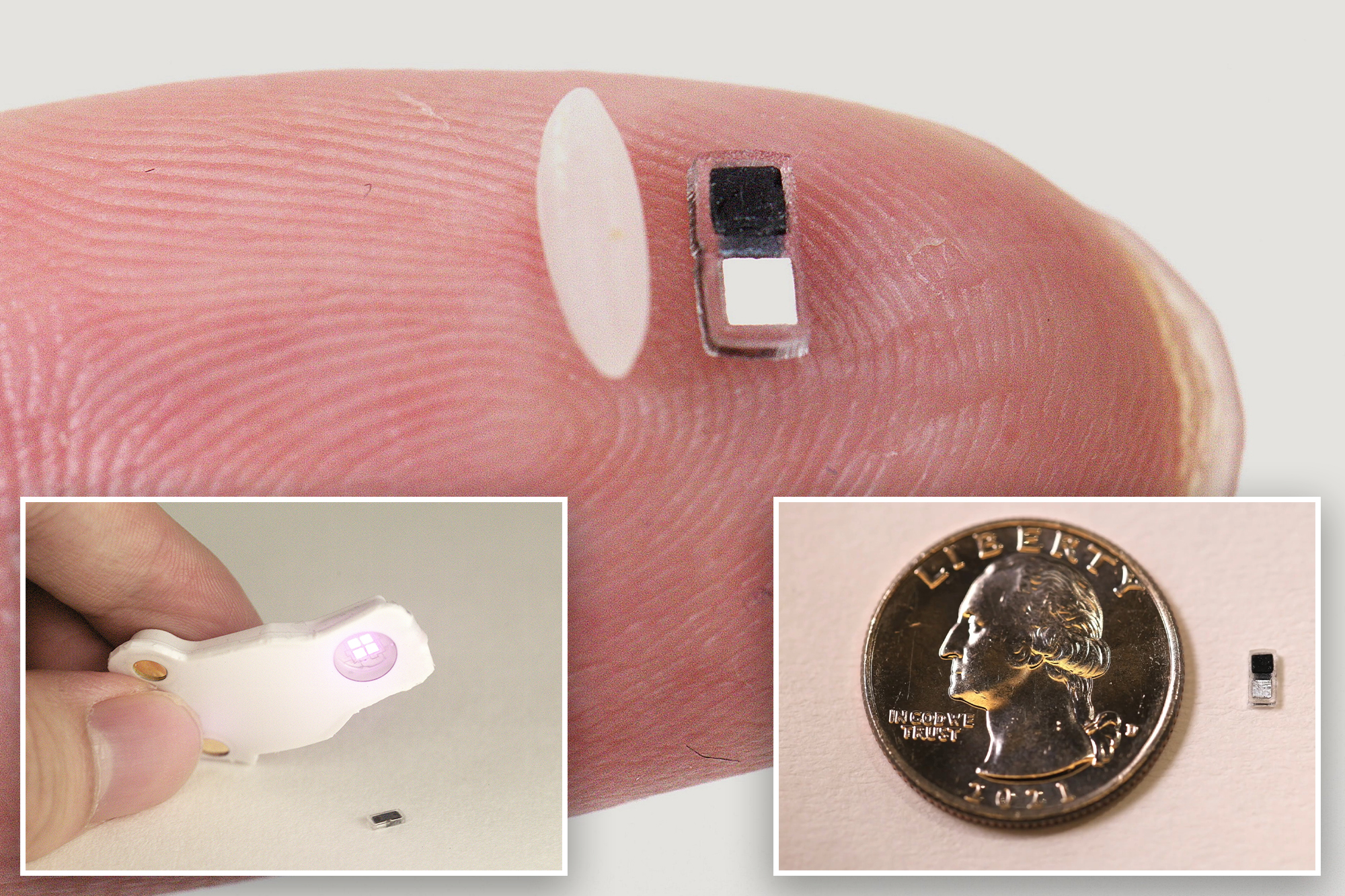
The smallest pacemaker in the world – smaller than a grain of rice – can help save babies born with heart defects, scientists say.
The miniature device can be inserted with a syringe and distributed as it is no longer needed.
Although it can work with the hearts of all sizes, the engineers who created it at the northwestern University say it is especially suitable for small, fragile hearts of newborn babies with congenital heart defects.
It measures only 1.8 millimeters in width, 3.5 millimeters in length and one millimeter in thickness, but still gives as much stimulation as a full size cardiac.
The small pacemaker is paired with a small, soft, flexible, wireless, coated device mounted on a patient’s chest to control the rhythm.
When the coated device reveals an irregular heartbeat, it automatically shines an easy pulse to activate the cardiac.
Short pulses – which penetrate the patient’s skin, chest and muscles – control the pace.
Designed for patients who only need a temporary opening, the cardiac is simply distributed as it is no longer needed.
The Northwestern engineer team explained that the pacemaker ingredients are biocompatible, so they are naturally distributed in body biofluids, bypassing the need for surgical extraction.
A study published in the journal Nature shows the efficiency of the equipment in some large and small animal models, as well as human hearts from the donors of the late organs.
“We have developed what it is, for our knowledge, the smallest Pacemaker in the world,” said the professor of pioneers of Northwestern Bioelectronics John Rogers, who led the development project.
“There is an essential need for temporary pacemakers in the context of pediatric heart surgeries, and this is a case of use where miniature size is extremely important. In terms of equipment load in the body – the smaller, the better.”
Northwestern experimental cardiologist Professor Igor Efimov, who co-directed the study, said their “great motivation” was children.
“About 1% of children were born with congenital heart defects, whether they live in a country with low resources or high resources,” he said.
“The good news is that these children only need temporary openings after surgery. In about seven days or more, most patients’ hearts will be self-repair. But those seven days are absolutely critical.
Now, we can put this small cardiac in a baby’s heart and stimulate it with a soft, soft, wearing device.
“And no additional operation is needed to remove it.”
The project is based on a previous cooperation between Prof Rogers and Prof Efimov, in which they developed the first distributed device for temporary openings.
Many patients seek temporary pacemakers after surgery in the heart, either while waiting for a permanent cardiac or to help restore normal heartbeat during their healing.
For the current standard of care, surgeons sew electrodes over the heart muscle during surgery.
The wires from the electrodes emerge from the front of a patient’s chest, where they are connected to an external opening box that gives a current to control the heart rate.
When temporary cardiac is no longer needed, surgeons remove cardiac electrodes.
But potential complications include infection, dislodment, chopped or damaged tissue, bleeding and blood clots.
“The wires literally last from the body, attached to a cardiac outside the body,” Efimov said.
“When cardiac is no longer needed, a doctor pulls it. Wires can become wrapped in scar tissue. So when the wires are pulled, it can potentially damage the heart muscles.
“This is really how Neil Armstrong died. He had a temporary cardiac after a bypass surgery. When the wires were removed, he experienced internal bleeding.”
Rogers said their original cardiac worked well, but the size of its recipient antenna restricted their ability to miniature it.
“Instead of using the radio frequency scheme for wireless control, we developed a light -based scheme to turn the cardiac and distribution of stimulation pulses on the surface of the heart,” he said.
“This is a feature that allowed us to dramatically reduce the size.”
The research team also reimped its source of energy.
Instead of using communication near the field to supply energy, the new pacemaker operates through the action of a galvanic cell, a simple battery that converts chemical energy into electricity.
“When the cardiac is embedded in the body, the surrounding biofluides act as an conductive electrolyte that joins electrically into those two metal pads to form the battery,” Rogers said.
“A very small circuit breaker activated with the opposite side by the battery allows us to turn the device from its” off “condition to a state” after the distribution of light passing through the patient’s body from the skin mounted. “
If the patient’s heartbeat falls below a certain rate, the coated device detects the event and automatically activates a light -emitting diode.
The light then ignites and turns off at a pace corresponding to normal heartbeat.
“Infrared light penetrates very well through the body,” Efimov Siad. “If you put a flashlight against your palm, you will see the brightness of the light across the other side of the hand.”
Rogers added explained that the heart requires a small amount of electrical stimulation.
“By minimizing the size, we dramatically simplify the implantation procedures, we reduce the trauma and risk to the patient and, with the distributed nature of the device, eliminate any need for secondary surgical extraction procedures,” he said.
“We can include our cardiacs in other medical devices such as heart valve replacements, which can cause heart block,” Efimov added.
The northwestern team says the technology’s versatility opens up other possibilities to use in bioelectronic drugs, including the help of nerves and bones to heal, wound treatment and pain blockage.
“Because it is so small, this cardiac can be integrated with almost any type of implantable device,” Rogers said.
#smallest #Pacemaker #world #implanted #syringe
Image Source : nypost.com